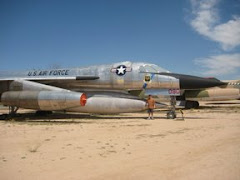
Norm Gilman designed an engine for the Allison division of General Motors. It powered several US fighters in World War Two. It had twelve cylinders. These twelve cylinders had a dispalcement of 1,710 cubic inches. To compare that to the car I drove in high school, my Plymouth Valiant's 6 cylinder displaced 225 cubic inches. Of course, most cars these days are measured in liters. The V-1710-33 displaced 28 liters. A big Diesel engine in a Dodge truck (read Cummins)these days displaces 6.7 liters. With that many cylinders needing fuel, and the size of the cylinders, well, they took a LOT of fuel. Engine #41-35890 was such an engine, it was in the P-40 #40-309 on the fateful day of May 17, 1941.
The Curtiss P-40 Warhawk, the airplane the Army Air Forces flew as a front-line fighter at the beginning of WWII, used the Allison V-1710-33. On May 17, 1941, Captain Jasper N. Durham left Hamilton Arm Air Field in California, on a mission described as "U-5," which one can assume likely to be a cross-country orientation flight. His destination, that day, was Portland, Oregon.
(Hamilton Army Air Field, Circa 1937. Submitted by Bob Rambo to Abandoned & Little Known Airfields If you are interested in discovering Army Air Fields you never knew existed, follow this link)
About 15 miles out of Eugene, Oregon, Captain Durham was flying contact (I assume this means they were following ground features, such as roads or railroad tracks) when he encountered a large rain squall "extending for a considerable distance across the flight path. It was decided to fly over the squall and follow the beam to Portland." In order to stay in clear air, they (? there is a report by 2nd Lt. Elmer Kingen that indicates he was with the Captain) flew 20 degrees to the right or the course (On a North Westerly heading, coming right would bring the pilot East). Different courses were flown, unsuccessfully, to bring the "beam" on course, but the pilot considered that to be expected. When the estimated time of arrival had been exceeded, a break in the clouds was seen about 30 degrees to the right. He descended into the break.
When he descended he did not recognize the terrain. His fuel was "very low." He flew lower observing tracks, which he "dragged" until he flew over the railroad station in Toppenish, Washington. He was unable to find Toppenish on the map, nor was he able to find a suitable landing field. "Finally, at Satus, Washington a field was located and a normal; landing was attempted." His approach was too low and his landing gear struck the bank of the creek flowing through the field. the gear folded, damaging the wing stubs and the propeller. There was about 5 gallons of fuel left in the tanks.
The P-40 was salvaged. A report was made. A decision was handed down. Colonel Davis, commanding the 10th Pursuit wing at Hamilton Field, California, approved the cause of the accident, but disagreed with a recommendation of an official reprimand and suggested showing him the results of the report and telling him that a repeat would result in "drastic action.". Basically, Durham got a slap on his hand.
The aircraft was repaired and the incident forgotten. The aircraft Durham flew was a Curtis P-40. This was the precursor to the P-40A. Deliveries of the P-40 began to Army units in June of 1940. It was eclipsed by the P-40A shortly after. By October of 1942, P-40s were barred from combat. Most were made for foreign service. In fact, the French ordered 140 of them, designated H-81A's. Unfortunately, by June of 1940, the French had capitulated to the Nazis and the order was taken over by the British.
Considering the P-40 served throughout the war in all theaters and that there were at least 19 variants, though not all produced, it must be assumed that the P-40 was an important aircraft to the allies in World War Two. P-40s rose to contest the Pearl Harbor attack forces. P-40s rose to combat German aircraft on more than one front. After the war, the P-40Q, with its unique bubble canopy, participated in the Reno Air Races. When the Flying Tigers are mentioned, an image of the P-40 springs to mind. This accident is a Washington link to the famous P-40.
(An interesting thing about this report, is it has few of the details that later accident reports contain. The accident report form itself was changed by 1943. Usually the mission is described or mentioned, here it simply was referred to by a letter designation. There was little of the extra fluff that is associated with later accident reports. The fact that this might have been a two ship flight is difficult to discern on the first reading, and even the fact that the witness was circling at 800 feet is hard to find because of copying tecniques making legibility an issue. This is the earliest report I currently have.)








No comments:
Post a Comment